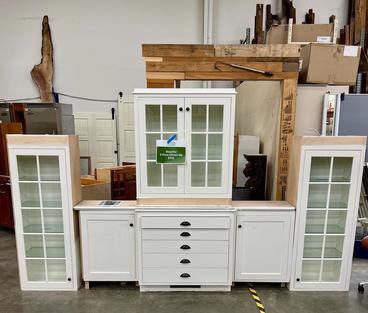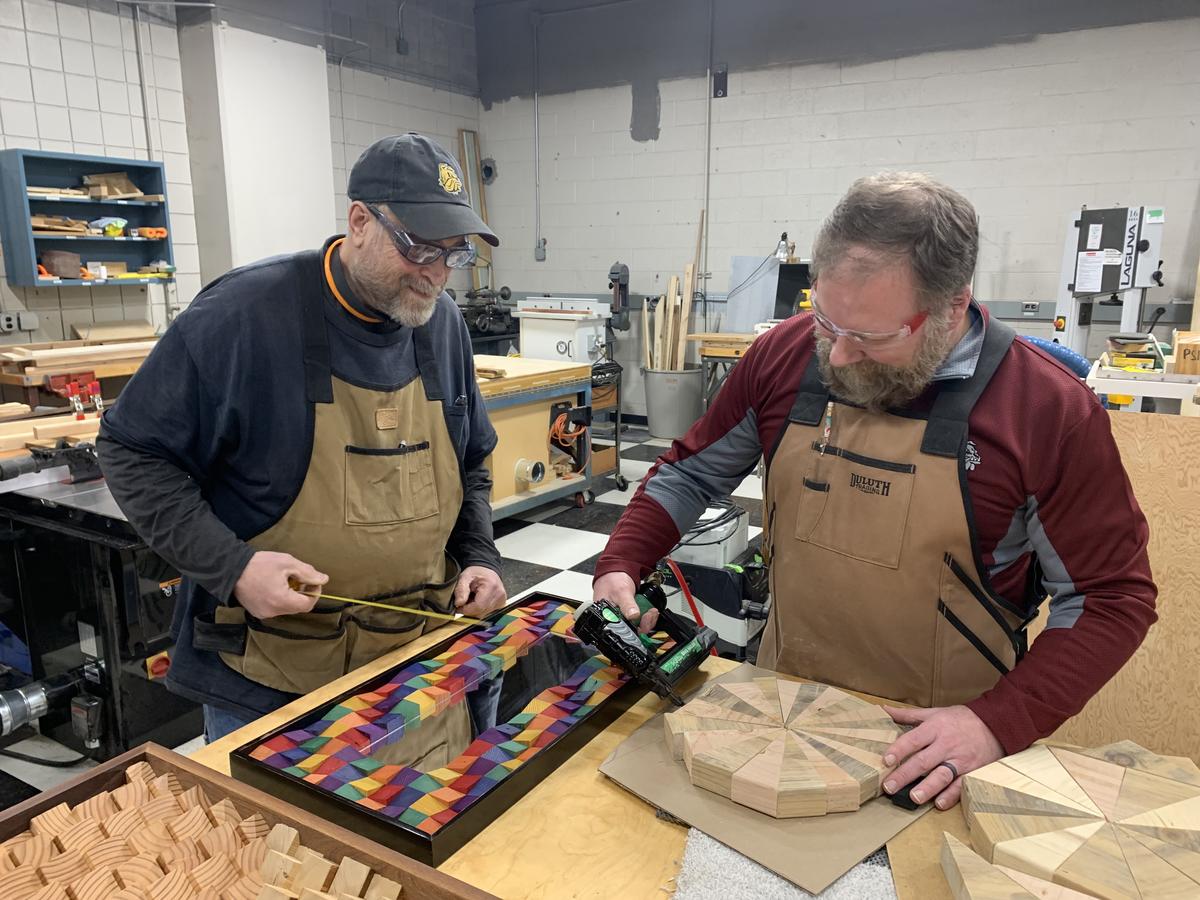A crisis is looming at a landfill near you. They’re full. Or almost full. And the trash can you roll to the curb each week represents less than half of what’s filling the landfill.
Old buildings, worn-out furniture, outgrown toys and other discarded stuff make up twice the amount of refuse compared with general household waste. But there’s value in those materials. And there’s a growing ecosystem of support to keep them out of the landfill.
NRRI Materials Scientist Victor Krause is keeping tabs on the evolution of waste diversion. He attended the 2024 Deconstruction + Reuse Conference, held in Savannah, Ga., in February, to learn how he can bring new knowledge to Minnesota.
“We have to take responsibility at the state government level,” said Krause. “Technology is catching up and making deconstruction easier, and awareness for reuse is up. But incentives to repurpose materials have to be mandated.”
Sharing Success
Krause points to the success Hennepin County has had by encouraging deconstruction, or at least partial deconstruction, and reuse of the materials when buildings are torn down. Obviously, the slower, hands-on effort of deconstructing over “trash-and-bury” is more expensive. To reduce that hurdle, the county provides grants to homeowners and businesses that can pull at least 1,000 pounds of lumber from buildings, along with other materials.
Better Futures Minnesota, a longtime partner working with NRRI on deconstruction and materials reuse, has benefited greatly from Hennepin County’s efforts. This non-profit social enterprise in Minneapolis hires and trains previously incarcerated men to deconstruct buildings and reconstruct materials into up-valued products.

“They’ve trained project participants over the years who are now managing deconstruction crews, building real careers,” said Krause. “The men get OSHA-10 training and learn valuable construction skills.”
Krause has also co-authored a state grant that launched a landfill diversion program at the Becker County Transfer Station. Two Better Futures staff have been hired to pull reusable products and materials from the landfill directly reselling them or to rebuild into sellable products.
This project alone has calculated removing nearly 34 tons of material from the Becker County landfill in 2023, earning the county more than $21,000. Waste diversion also reduces carbon dioxide emissions significantly, measured in hundreds of thousands of tons.
The funding is provided by the Minnesota Legislative Citizen Committee on Minnesota Resources (LCCMR) as recommended by the Environment and Natural Resources Trust Fund (ENRTF).
Technology Advances
Improving the efficiency of deconstruction – the process of manually taking a building apart piece-by-piece – will lower the cost and, hopefully, make it a mainstream practice.
Krause learned about robotic denailing devices that can quickly pull metals from boards, and drone-based and phone-app 3-D scanners that can assess materials reuse potential before deconstruction.
“Instead of punching holes in the walls to see the substructure, they’re able to develop point-cloud images of the structures to see how many two-by-fours and other usable materials can be generated,” Krause explained. “It was super cool.”
There are also researchers looking at how to use reclaimed lumber in glue and nail laminated timber beams and technologies that quickly assess the lumber grade.
Moving into Midwest
The East and West Coasts are further along in their deconstruction and materials reuse efforts than the Midwest. Full landfills and lack of space to build more is driving the demand.

It’s not easy. And yet, cities like Portland on the West Coast and Baltimore on the East Coast pushed ahead and implemented ordinances requiring deconstruction over demolition for older homes. Others do what they can with financial incentives.
Reducing landfill waste is just one obvious benefit. Many cities partner efforts with non-profit organizations that use the opportunity to provide job training, like Better Futures Minnesota. Deconstruction also preserves architecturally historic building features and provides low cost building materials to the community.
“There are many indirect costs associated with demolition and landfilling,” Krause said. “And end-of-life comes so soon with modern products. We have to start building with deconstruction in mind, and plan for product recycling. It’s definitely coming fast.”
A step further
NRRI helped Better Futures create up-valued uses for lumber from deconstruction projects, sold in their Reuse Warehouse. For example, wood benches made with training from NRRI materials specialists sell for $250 each.
Now, NRRI is taking it a step further by addressing smaller pieces of wood that are often discarded, making decorative prototypes to jumpstart creativity.
“Material availability changes almost daily at transfer stations,” Krause explained. “So we created some pieces that combine metal with wood to demonstrate ways to apply creative thinking in materials use.”
Through their deconstruction services, Better Futures was able to keep more than one million tons of building materials out of Minnesota landfills, according to their website. All proceeds from sales go to the organization’s outreach and integrated-care services, helping men receive the support they need to walk a better path in life and become productive community members.
While veering somewhat off the “natural” resources path, Krause’s waste diversion efforts help fulfill NRRI’s mission of research solutions that value our resources, environment and economy. It also helps meet the Institute’s support of the United Nations’ Sustainable Development Goals, especially Goal 12: “Ensure sustainable consumption and production patterns.”
